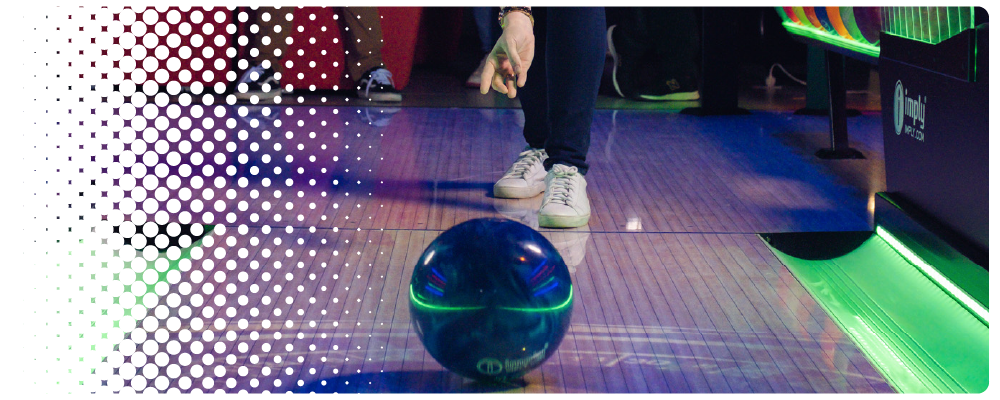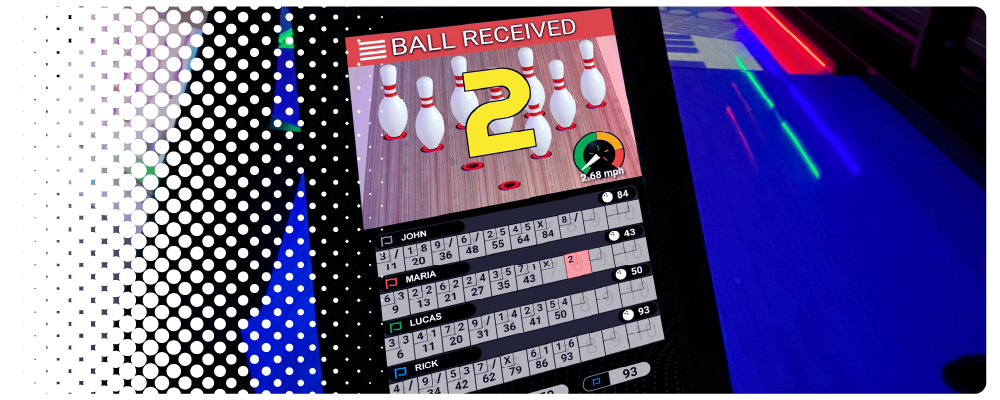Rules, Terms, and Tips for Bowling
Want to get better at Bowling? To learn the basic rules and improve your game, check out the tips Imply®, one of the world’s leading Bowling brands, has put together about this fun sport.
Discover the main rules of Bowling and see why this game is so enjoyable and easy to pick up at any age. You’ll also find the most common terms and some practical tips to sharpen your skills.
How to Throw a Bowling Ball
The throw is the heart of the game. Here’s a step-by-step guide:
At the foul line, stand with your back to the pins. Take four or five steps forward, turn to face the pins, and use the lane markers to choose your starting spot.
If you’re right-handed, place your left foot slightly ahead (reverse this if you’re left-handed) and walk forward at a natural, steady pace.
Swing your arm with the ball smoothly as you walk. Let it drop back and down, while your other arm extends out to the side for balance.
Allow the ball to build momentum naturally. Release it firmly but without forcing, with your thumb pointing upward or toward your target pin. Keep your arm moving after release. Pro tip: don’t focus on the pins when you throw, aim for the arrows in the middle of the lane.
The Rules of Bowling
Bowling is about rolling the ball down the lane to knock over 10 pins arranged in a triangle. An official game, called a “line,” has 10 frames.
In each frame, you can throw up to two balls to try to knock down all 10 pins.
The basic rules are:
Strike and Spare: Knock down all 10 pins on the first throw for a strike. Knock them down on the second throw for a spare.
Tenth frame: If you score a strike or spare in the last frame, you get bonus throws. Two extra shots for a strike, one for a spare.
Legal delivery: A throw counts when the ball crosses the foul line onto the lane. The ball must be released by hand only, without devices or aids.
Bowling is a guaranteed hit with players of all ages. Imply® offers a complete line of Bowling lanes in different styles. Check them out!
Scoring the game
Points: Every pin knocked down is worth one point. Scores range from zero to a perfect 300.
Frames: A game has 10 frames. The number of pins from your first ball is recorded in the top left of each frame box, the second in the top right.
Symbols: A miss is shown as a dash “-”. A strike is “X”. A spare is “/”.
Bonuses: Strikes and spares add extra points. A strike is worth 10 plus the pins from your next two throws. A spare is worth 10 plus the pins from your next throw. The more you string them together, the higher your score.
Perfect game: 12 strikes in a row equals the maximum 300 points.
Key Plays
Strike: All pins down on the first ball. Worth 10 plus pins from the next two throws.
Double: Two strikes in a row. Worth 20 points plus the number of points from the first throw made after the second strike.
Turkey (Triple): Three strikes in a row.
Spare: All pins cleared on the second ball. Worth 10 plus pins from the next throw.
Open frame: Failing to knock down all 10 pins in a frame.
Split: A difficult leave with pins separated, making a spare tough.
Bowling Glossary
- 7-10 Split (“1001”): The toughest spare, with only the corner pins left.
- Approach: Area before the foul line where you walk and prepare.
- Back up: A ball that curves in the same direction as the throwing arm.
- Break point: Where a hooking ball turns toward the pocket.
- Gutter: Channels on either side of the lane.
- Double: Two strikes in a row.
- Dutch 200: A 200-point game scored by alternating strikes and spares.
- Foul: Stepping on or over the foul line.
- Frame: Each of the ten possible plays. The number of pins from your first ball is recorded in the top left of each frame box, the second in the top right. Each frame allows to play up to two balls. On the final frame, three balls can be played, provided a strike or a spare is first achieved.
- Four bagger/Five bagger: Four or five strikes in a row.
- Handicap: A numerical advantage used to balance players of different levels. It is calculated according to a formula that varies depending on the event rules.
- Hook: A ball that curves opposite the throwing arm.
- House ball: A ball provided by the Bowling Center.
- Line: Another word for a full game.
- Miss: Completely miss the pin(s).
- Pendulum: The swinging motion performed to release the ball.
- Pocket: The ideal strike zone (1-3 pins for right-handers, 1-2 for left-handers).
- Railroad: A wide split with distant pins, like 4-10 or 2-10.
- Spare: When all 10 pins are knocked down with two balls.
- Split: A pin formation left standing with pins separated from each other (except when one of them is pin 1), making it difficult to complete a spare.
- Strike: When all 10 pins are knocked down with the first ball of a frame.






